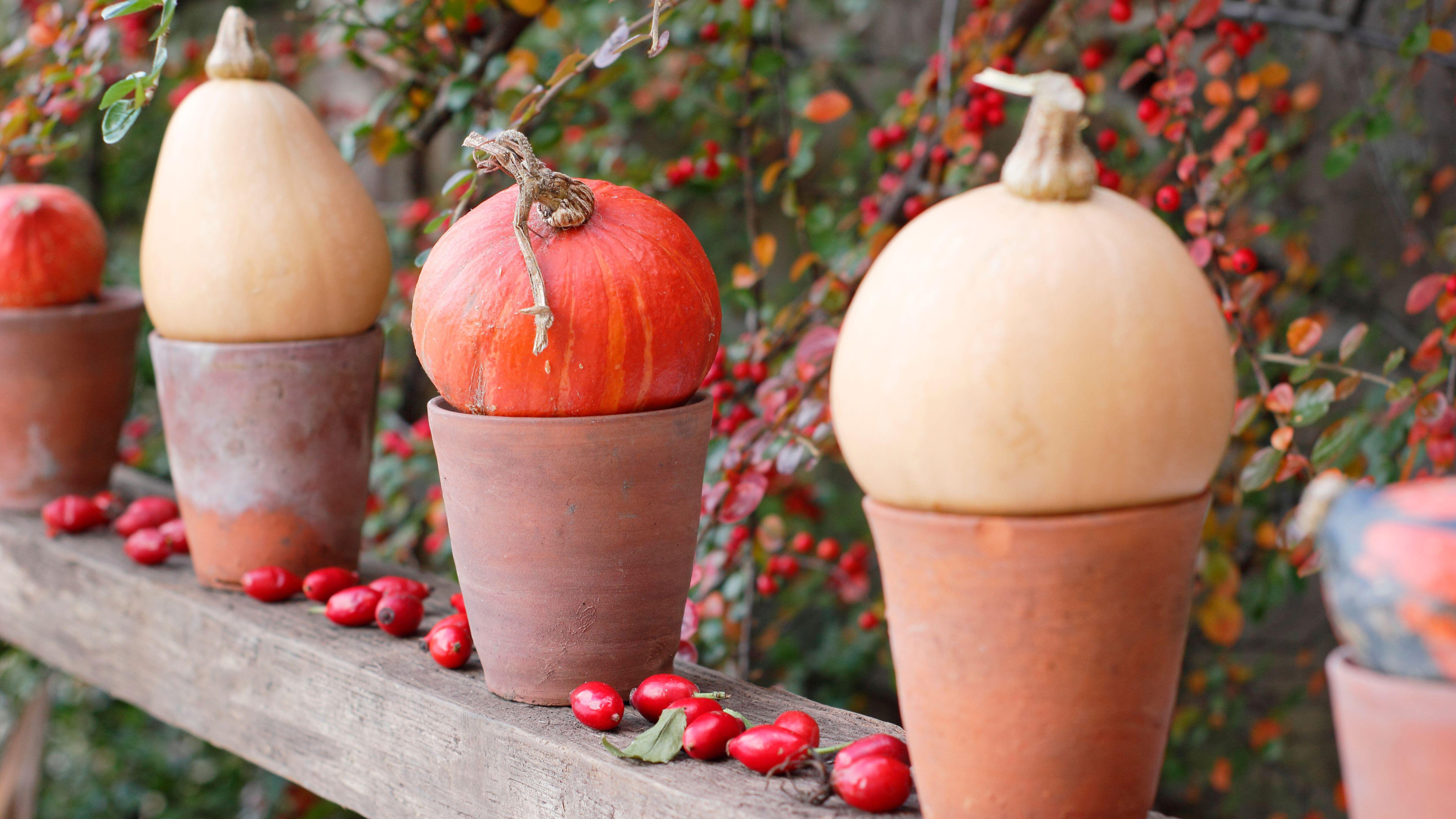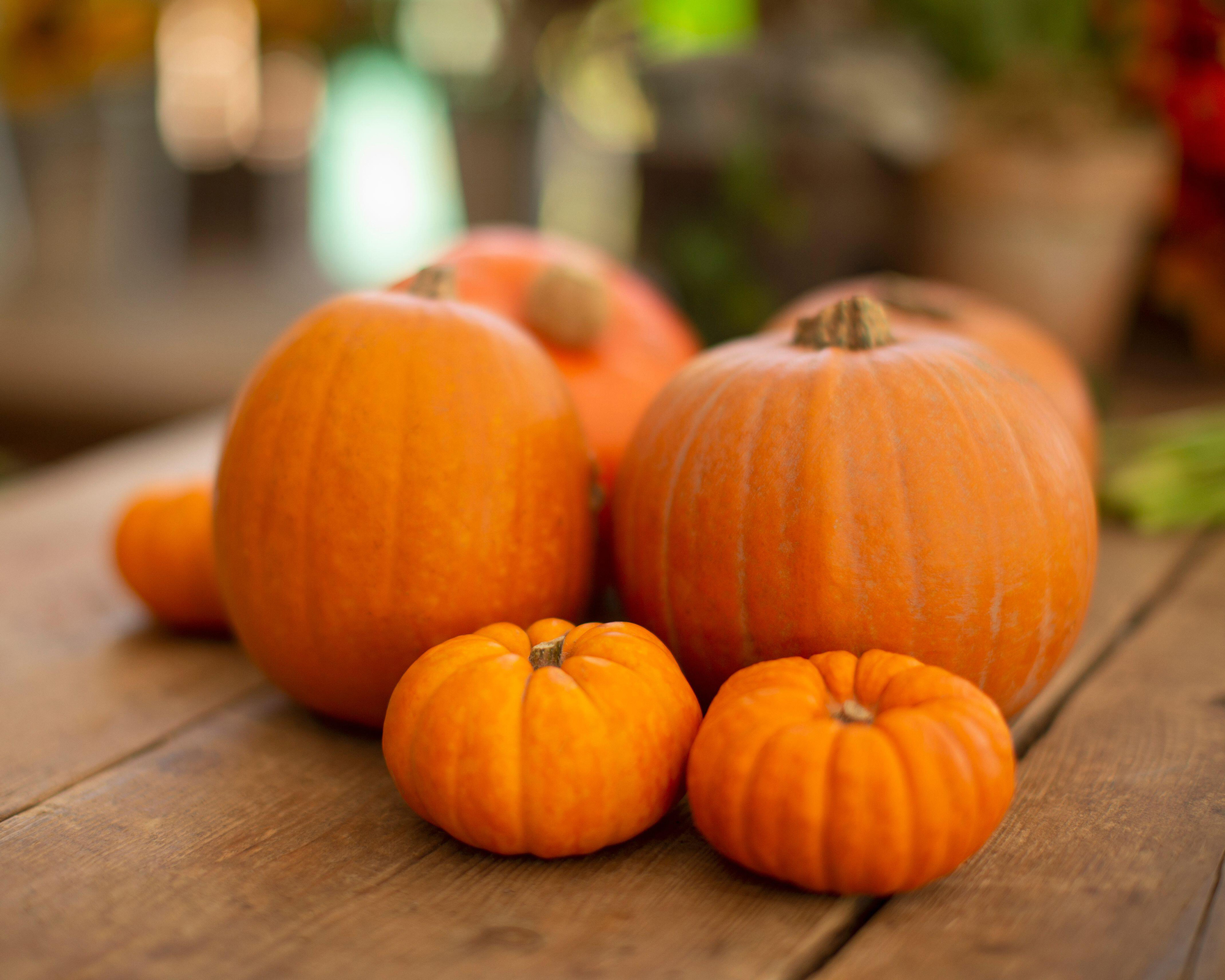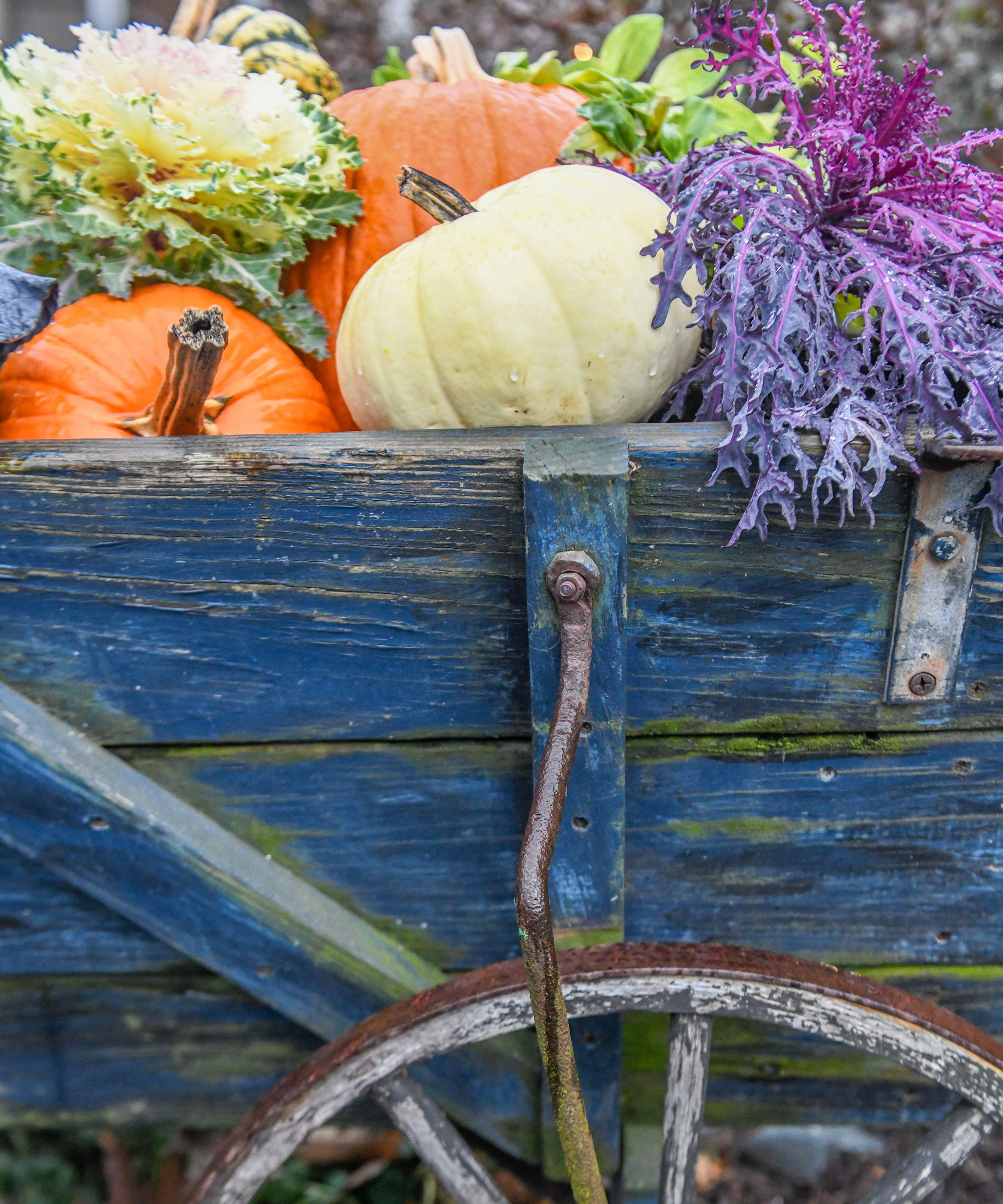How to stop pumpkins from rotting: expert tips to keep them looking good
If you're wondering how to stop pumpkins from rotting, help is at hand for a fall display that lasts that little bit longer

Wondering how to stop pumpkins from rotting? Pumpkins are a staple of fall displays in many countries. Whether you're celebrating Halloween, Thanksgiving, or simply the beauty of autumn harvest time, pumpkins make for wonderfully versatile decorative objects. The trouble is that because these are fresh vegetables, they have a tendency to rot, ruining your display.
Whether pumpkins are part of your outdoor Halloween decor ideas or you are dotting them around your home, there are a few tips to bear in mind to keep them fresh. Here's what professionals with lots of experience with pumpkins told us.

Expert advice on how to stop pumpkins from rotting
Tammy Sons, a horticultural expert and CEO of Tn Nursery, explains that for pumpkins that are still on the vine, 'you need to get the pumpkins off the soil, elevate them. The soil has too much moisture and will rot the bottoms if not elevated when they get near maturity and it's picking time.' Keeping ripening pumpkins off the soil is part of learning how to grow pumpkins, whether you plan on displaying them or not.
Carved pumpkins just need to be left alone in dry conditions. Tammy is adamant that 'if a pumpkin is de-pulped, wiped out well, and carved, the main idea to keep it from rotting is to keep moisture away from it and keep it out of the sun so it won't dry up and wither.'
It may be tempting to mess with them and wash your pumpkins before getting started on your pumpkin carving ideas, but Tammy strongly advises against this: 'Do not ever wash the inside of a pumpkin, moisture causes rot. Take paper towels and gently rub out excess moisture after the pulp is removed.'
If you're really worried your pumpkins may not last until Halloween/Thanksgiving, you can spray them with WD-40 which will help reduce moisture levels, but do bear in mind that this will affect the biodegradability of your pumpkins. What's more, due to the flammable nature of WD-40, you should keep your pumpkin away from naked flames; opting for battery-powered candles is a much safer option.

How to stop whole pumpkins from rotting
If you are using whole, uncarved pumpkins to decorate your home (our pumpkin painting ideas are perfect for this), the process of preserving them is similar to carved pumpkins, and actually somewhat simpler. Mary Jane Duford, a full-time gardening blogger, has good news for pumpkin lovers, explaining that 'whole pumpkins used for fall decor typically last much longer than carved pumpkins. Most types will last about a month at room temperature or at least two-three months in cool/dry conditions. Some heirloom types can last up to a year when kept in the range of 50°-55°F (10°-13°C).'
Mary Jane especially recommends heirloom varieties, because they are 'the longest lasting pumpkins' and are often marketed as “good for storage”. When choosing your pumpkins, she recommends seeking out the ones that 'are fully-grown, firm, undamaged, and not hit by frost in the field.'
If you are planning to display your own home-grown pumpkins, 'leave at least 3in of stem on the pumpkin. Take care not to bruise the pumpkins when moving them (and don’t carry them by the stem). Place them on a piece of wood or another raised dry surface to discourage rot.'
Keeping pumpkins from rotting is all about maintaining a steady temperature and low moisture levels. You don't need any fancy techniques or substances to keep them fresh, and you certainly don't need to wash them to make them a stunning centerpiece for your fall front porch ideas.
Anna writes about interior design and gardening. Her work has appeared in Homes & Gardens, Livingetc, and many other publications. She is an experienced outdoor and indoor gardener and has a passion for growing roses and Japanese maples in her outside space.
